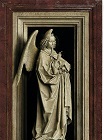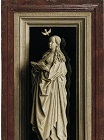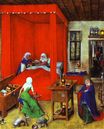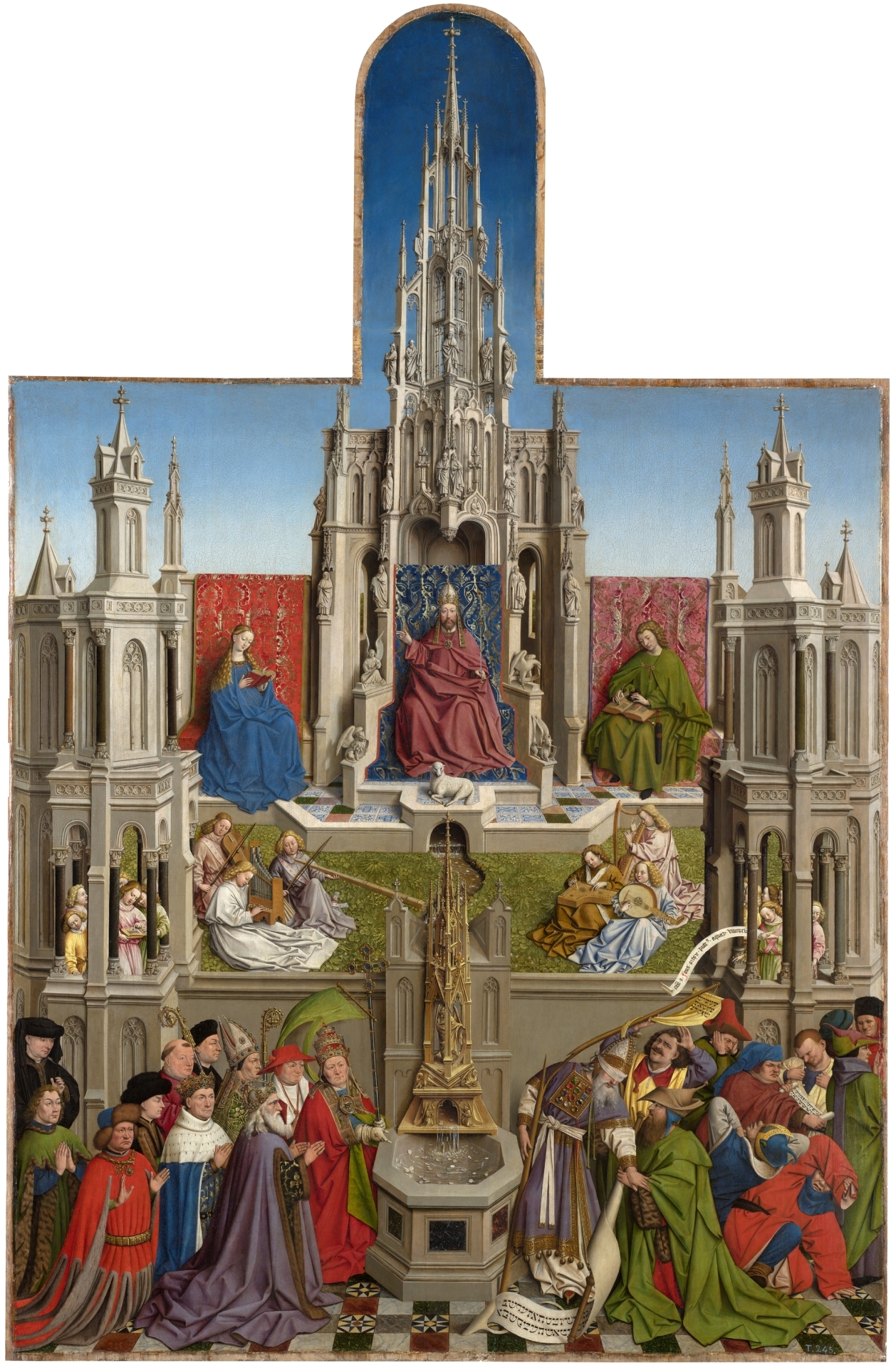Jan van Eyck - The Fountain of Grace Workshop of 1440-1445
 |
 |
 |
 |
 |
 |
 |

The Fountain of Grace Workshop of 1440-1445
181x119cm oil on wood
Museo Nacional del Prado.Madrid
<< Previous G a l l e r y Next >>
From Wikipedia, the free encyclopedia:
The Fountain of Life or The Fountain of Grace and the Triumph of the Church over the Synagogue are names given to an oil on panel painting completed c 1432. For most of its history the painting has been in Spain, where it is currently features in a special exhibition in the Museo del Prado, Madrid. Stylistically and thematically, the painting is related to the work of Jan van Eyck, but it is unsigned and there have been competing theories as to whether it is by van Eyck himself.
The subject matter of the painting would have been of particular interest in 15th century Spain which had the world´s largest Jewish community. There has been recent speculation that it was painted by van Eyck himself, possibly while he was on a diplomatic mission to the Iberian peninsula. However, technical analysis suggests that it was painted in the Netherlands, albeit possibly in response to a commission from Spain, in van Eyck's workshop.
The Fountain of Life closely resembles passages in the 1432 Ghent Altarpiece by Jan and his brother Hubert. Although there is consensus among specialists that it is the product of a workshop, some attribute The Fountain of Life to a youthful Jan, his brother Hubert, or much later, and less likely, Petrus Christus.
The painting is structured into three levels. The top terrace shows a Deësis of God the Son, the Virgin Mary and St. John the Evangelist. The middle section shows four groups of angels, while the lower level has two groups of holy men; with Christians led by a Pope and princes to the right, and Jews led by blindfolded high priests to the left. These two groups represent true believers and non true believers in Christ as the messiah respectively. The Fountain of Life is a symbol referring to baptism and or eucharist. The water that flows from the top to the lower terrace, is intended as a symbol of "the Grace that illuminates the Triumphant Church and blinds the Synagogue".